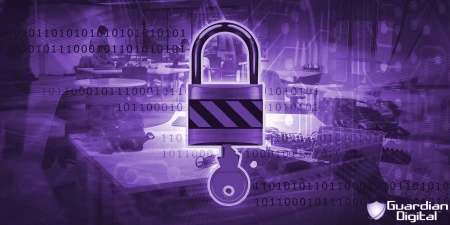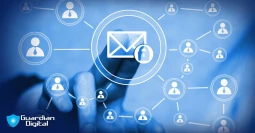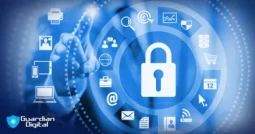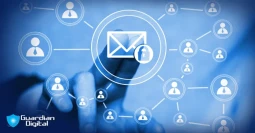Why is Email Encryption Necessary, and How Do You Enable It?

Email encryption isn't just an added layer of security; it's a necessity for all organizations dealing with sensitive information. For instance, each email sent without encryption provides some kind of open window through which cyber thieves can view and steal your organization's private data, such as financial records, customer details, and other proprietary information. These data breaches are common; millions of records have been compromised yearly due to unprotected email transmissions.
Encryption used to be a nicety, but today, it is a broad barrier between hackers and your sensitive data. This article will explain why email encryption for small businesses is important and walk you through a step-by-step setup in Google Workspace in security settings as part of an essential email threat protection strategy. By the end, you will have all the tools needed to help you secure your communications and avoid the kinds of risks organizations face daily.
Why Is Email Encryption for Small Businesses Necessary?
1. Keeps sensitive information private.
Once your email is encrypted, only the intended recipient can access its contents, protecting it from potential hijacking by hackers or unauthorized individuals. For any company handling confidential information, encryption is essential.
2. Helps Meet Legal Standards of Privacy
Suppose your organization collects or shares personal data in any form. In that case, it must likely comply with certain privacy legislation, such as GDPR or HIPAA. Encryption of your emails means sensitive information does not fall into unauthorized hands, and this helps your organization answer such needs and evade potential fines.
3. An Additional Layer of Protection against Phishing and Spoofing
It doesn't just protect the content of your email, but encryption also makes phishing and spoofing much harder. Most hackers who impersonate your valid contacts make use of unencrypted emails to steal information. While Google's advanced email threat protection settings help minimize most of these risks, encryption is a pretty simple way to add some extra defense.
How to Enable Email Encryption in Google Workspace
Enabling email encryption involves a few key steps. Google Workspace administrators can follow these steps to set up encryption and secure email communication.
Step 1: Access the Admin Console
The Admin Console is where all Google Workspace in security settings, including email encryption, are managed.
1. Go to Admin Console.
2. Navigate to Apps > Google Workspace > Gmail > Safety and security settings
Step 2: Enable Transport Layer Security (TLS)
TLS encryption protects emails while they’re being sent, making it much harder for hackers to intercept them during transmission.
1. In the Admin Console, go to Gmail settings.
2. Under End User Access, select Require TLS.
3. Save the changes
Step 3: Set Up Two-Step Verification (2SV)
Adding 2SV requires users to confirm their identity with a second factor, like a phone prompt. This simple step is one of the easiest ways to reduce unauthorized access.
1. In the Admin Console, go to Security > 2-Step Verification.
2. Enable and enforce 2SV for all users
Common Questions About Email Encryption
Q1: What happens if an email isn't encrypted?
It means it’s open to interception by any Tom, Dick, and Harry along the route. Hackers can intercept such emails, and once they get their hands on them, they might exploit sensitive information for theft or other kinds of data compromise. Hence, anything concerning personal or important information over email is left wide open without encryption.
Q2: How does TLS differ from end-to-end encryption?
TLS encrypts emails from server to server while in motion, securing data during transport. End-to-end encryption, however, locks the email from the moment it is sent until the recipient opens it, ensuring that only the sender and recipient can read its contents. This will guarantee that even while emails pass through different servers, no one else can view its content.
Q4: What if the recipient’s email provider doesn’t support encryption?
The email might be sent unencrypted if the recipient’s provider doesn’t support TLS. Google Workspace in security settings tries to establish a secure connection first and notifies users if encryption isn’t possible.
Q5: How can I check if an email is encrypted?
A green padlock icon in Gmail indicates that the email is encrypted with TLS. A red padlock means encryption wasn’t applied, so it’s worth verifying if encryption is on.
Why Email Encryption for Small Business is Essential
Email encryption is more than just a feature; it's a crucial shield that protects from unrelenting cyber threats. As more and more organizations of all sizes are being targeted because of data breaches and attacks centered around emails, setting up encryption is a proactive step that empowers you to take control of your enterprise's most sensitive information and build trust among clients, partners, and stakeholders alike.
Setting up encryption is more than proactive; it is committing to the security of your enterprise's most sensitive information. This is commitment to building confidence in all kinds and classes of clients, partners, and stakeholders alike. With the right tools and knowledge regarding how to secure email communication, you can safeguard your most critical data from unauthorized access and make sure of a resilient and secure foundation on which to grow your business.
Other FAQs
- What Is Guardian Digital EnGarde Cloud Email Security?
- FAQs: What Are Some Examples of Malicious Code?
- How to Properly Scan Your Windows Computer for Malware & Remove Malware from Your PC
- FAQs: What Are Denial of Service (DoS) Attacks?
- FAQs: Why Outsource Businesses Email Security?
- What Is Domain Spoofing?
- What Are Insider Threats & How Can You Reduce Your Risk?
- The Silent Assassins: How Impersonation Attacks Target CEOs via Email
- How Can I Choose the Right Email Security Service for My Organization?
- What Are the Benefits of Managed Security Services Providers (MSSPs)?



